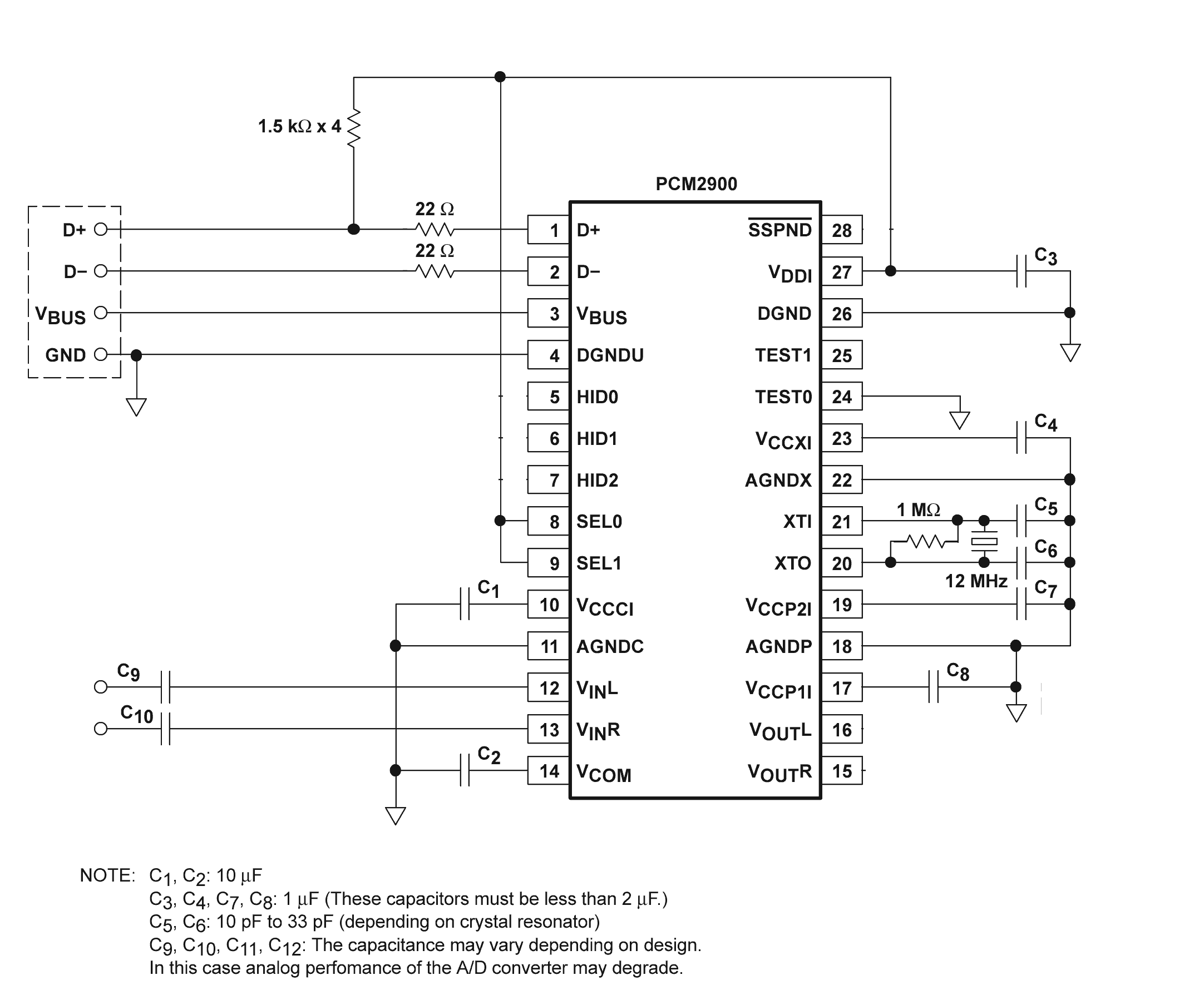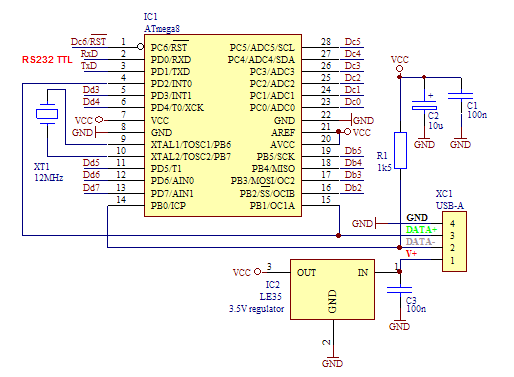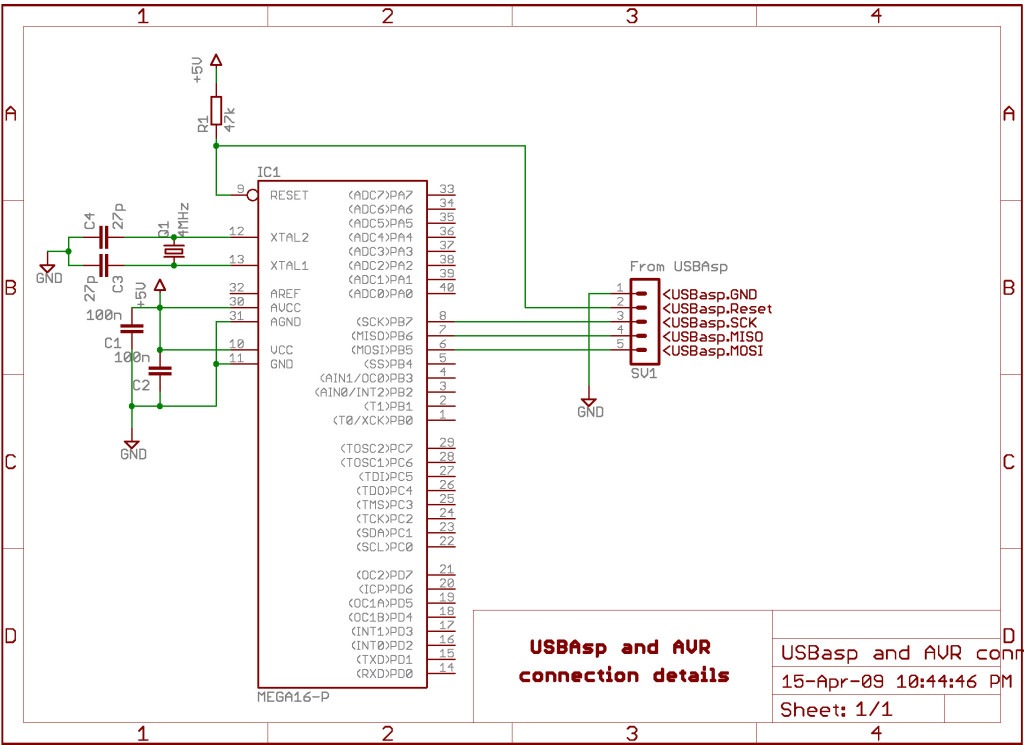
USB Blinky

Projects often involve numerous LEDs and microcontrollers; however, there is appreciation for simpler implementations using LEDs. One of the most basic LED circuits is...
A basic LED circuit can be constructed using a single LED, a current-limiting resistor, and a power source. The LED is a semiconductor device that emits light when current flows through it in the forward direction. The current-limiting resistor is essential to prevent excessive current from damaging the LED.
To build this circuit, the LED's anode (longer lead) is connected to the positive terminal of the power source, while the cathode (shorter lead) is connected to one end of the resistor. The other end of the resistor is then connected to the negative terminal of the power source, completing the circuit.
The value of the current-limiting resistor can be calculated using Ohm's Law. For example, if the power source is 9V and the LED forward voltage is 2V with a desired forward current of 20mA, the resistor value can be calculated as follows:
1. Calculate the voltage across the resistor:
V_R = V_source - V_LED = 9V - 2V = 7V.
2. Use Ohm's Law to find the resistance:
R = V_R / I = 7V / 0.020A = 350 ohms.
A standard resistor value of 360 ohms can be used in this case. This simple LED circuit can serve as a fundamental building block for more complex designs, allowing for the exploration of various configurations and functionalities, such as blinking or fading effects when paired with a microcontroller.My projects typically involve many LEDs and microcontrollers. However sometimes I just love the simplest of things with LEDs. One of the very basic L.. 🔗 External reference
A basic LED circuit can be constructed using a single LED, a current-limiting resistor, and a power source. The LED is a semiconductor device that emits light when current flows through it in the forward direction. The current-limiting resistor is essential to prevent excessive current from damaging the LED.
To build this circuit, the LED's anode (longer lead) is connected to the positive terminal of the power source, while the cathode (shorter lead) is connected to one end of the resistor. The other end of the resistor is then connected to the negative terminal of the power source, completing the circuit.
The value of the current-limiting resistor can be calculated using Ohm's Law. For example, if the power source is 9V and the LED forward voltage is 2V with a desired forward current of 20mA, the resistor value can be calculated as follows:
1. Calculate the voltage across the resistor:
V_R = V_source - V_LED = 9V - 2V = 7V.
2. Use Ohm's Law to find the resistance:
R = V_R / I = 7V / 0.020A = 350 ohms.
A standard resistor value of 360 ohms can be used in this case. This simple LED circuit can serve as a fundamental building block for more complex designs, allowing for the exploration of various configurations and functionalities, such as blinking or fading effects when paired with a microcontroller.My projects typically involve many LEDs and microcontrollers. However sometimes I just love the simplest of things with LEDs. One of the very basic L.. 🔗 External reference
Warning: include(partials/cookie-banner.php): Failed to open stream: Permission denied in /var/www/html/nextgr/view-circuit.php on line 713
Warning: include(): Failed opening 'partials/cookie-banner.php' for inclusion (include_path='.:/usr/share/php') in /var/www/html/nextgr/view-circuit.php on line 713





